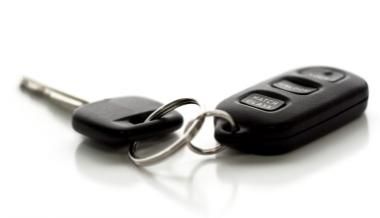First, let's take a look at what hot-wiring actually is. In its simplest terms, it's a way to start a car by bypassing the ignition lock cylinder, which is the mechanical part where the ignition key is inserted to crank the car. And that's important because the older the car, the "easier" it is to hot-wire.
In an explainer for Jalopnik, writer Jason Torchinsky notes that most car models from the post-'90s on are equipped with built-in immobilizers, which make hot-wiring a lot more complicated — but not impossible. Cars with immobilizers are designed not to start if that immobilizer isn't bypassed with the correct key.
However, in an older-model car (pre-'90s) without an immobilizer, it's still fairly easy to clip on a few connectors you can get from the hardware store, and hot-wire that car sans key.
But what about late-model cars — we're talking the ones with fancy push-button ignitions and key fobs? Can you hot-wire those? The answer is no. Essentially, these cars work more like computers. They unlock whenever the key fob is in the vicinity, and the ignition starts with a press or turn of a button. There's no ignition lock cylinder to bypass. These changes basically rendered the entire hot-wiring process obsolete.
"In newer vehicles with keyless (push button) ignitions, hot wiring is a thing of the past," Frank Scafidi, director of public affairs at the National Insurance Crime Bureau says via email. "But hot wiring is still an effective theft method in older vehicle, no question about it." The National Insurance Crime Bureau helps increase public awareness of theft, fraud and other crimes.



